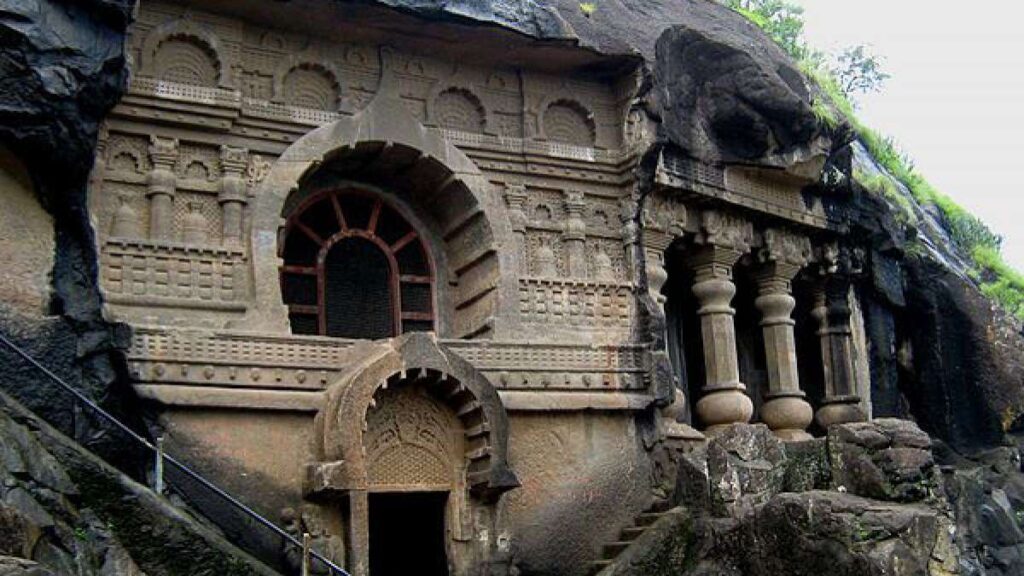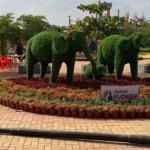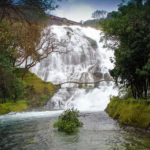A Look at Ancient Rock-Cut Architecture from the Mysterious Nashik Caves
Nashik, a city with a rich historical and cultural legacy, is well-known for its vineyards and temples as well as for its amazing cave structures. The Nashik Caves, commonly referred to as Pandavleni Caves or Trirashmi Leni, provide a fascinating glimpse into the past by showing amazing rock-cut structures and explaining the lifestyles of ancient civilizations.

The Pandavleni Caves History
Numerous well-known and prominent Jain saints have lived in the caverns, including Ambika Devi, Tirthankara Vrishabdeo, and Veer Manibhadraji.
Pundru, which in Pali means “yellow ochre colour,” was the previous name for the Pandavleni Caves. This is due to the fact that Buddhist monks who wore “chivara,” or yellow robes, lived in the caverns. These appealing caves served as locations for practising meditation and for calmly residing. There is no relation or reference to the Pandava brothers from the Mahabharata in the name of the caves, Pandavleni. The disciples used a few water tanks that were constructed inside of the rocks as gathering spaces. They also have a large number of sculptures of Lord Buddha and Bodhisattvas.
Pandu Caves later replaced the word “Pundru.” The numerous inscriptions in the alluring cave are a vital source of current historical data. They provide evidence that Nashik was ruled by three dynasties at the time—the Western Kshatrapas, the Satavahanas, and the Abhiras. The inscriptions also attest to the fact that, in addition to the kings, local landlords and merchants supported Buddhism and contributed significantly to the construction of the Pandavleni Caves. Years later, despite the fact that the name is a misnomer, people began referring to these caves as the Pandav Caves, and they have retained this name ever since.
Pandavleni Caves Design and Concept
On the north face of the Trisasmi hill, a lengthy line of these twenty-four caverns were carved out. The caves not only have great historical significance, but they also reflect a glorious period of that period’s rock-cut architecture. There are in total twenty-four excavations, however many of them are tiny and of less importance. Contrasted with the ornate facade of the Pandavleni Caves, the inside appears to be straightforward.
The Pandavleni Caves Interior
While the 18th cave is a Chaitya, which is essentially a shrine or prayer hall with a Stupa at one end, the majority of the Pandavleni Caves are Viharas, which means that they are residences or refuges used by travelling monks during the rainy season. The caves of the most interest and significance are numbers 3, 10, 18, and 20. The magnificent vihara in cave 3 has 16 cells and beautiful sculptures, but cave 10 is even larger and more stunning. There are inscriptions on it that refer to gifts that Ushadatta made somewhere around 120 AD. The oldest cave in the entire group, Cave 18 is a ‘chaitya’ with a particularly complex facade. It has a stupa and lovely, elaborate carvings.
Shrines, cisterns, rare inscriptions, carved images of Buddha, and icons of some of the Jain Tirthankaras can all be found in these beautiful caverns. In addition, there are sculptures of monarchs, farmers, and merchants, and the rich iconography shows a lovely fusion of Indo-Greek architectural design.
The location also features a superb, long-standing water management system. There are also other water tanks in this area that were neatly created out of a solid rock.
Breathtaking Views and Surroundings
The Nashik Caves, which are located atop Trirashmi Hill, provide stunning panoramic views of the city and its surroundings. You may take in the serene mood and take in the natural beauty that surrounds these caves as you walk up the steps leading to them. The cavern’s breathtaking environment amidst the Western Ghats greenery adds to their attraction, making it the ideal destination for both history buffs and those who enjoy the outdoors.
The extensive architectural and cultural heritage of India has been referred to by the Nashik Caves. For history buffs, art lovers, and spiritual searchers, these sites are a must-see destination because of its exquisite rock-cut architecture, captivating sculptures, and peaceful surroundings. You can’t help but be amazed as you explore the caves with the creativity and skill of the prehistoric peoples who once made these caves their haven. The Nashik Caves provide a portal to the past, enabling us to appreciate the beauty of our cultural heritage and establish a connection with our roots.










